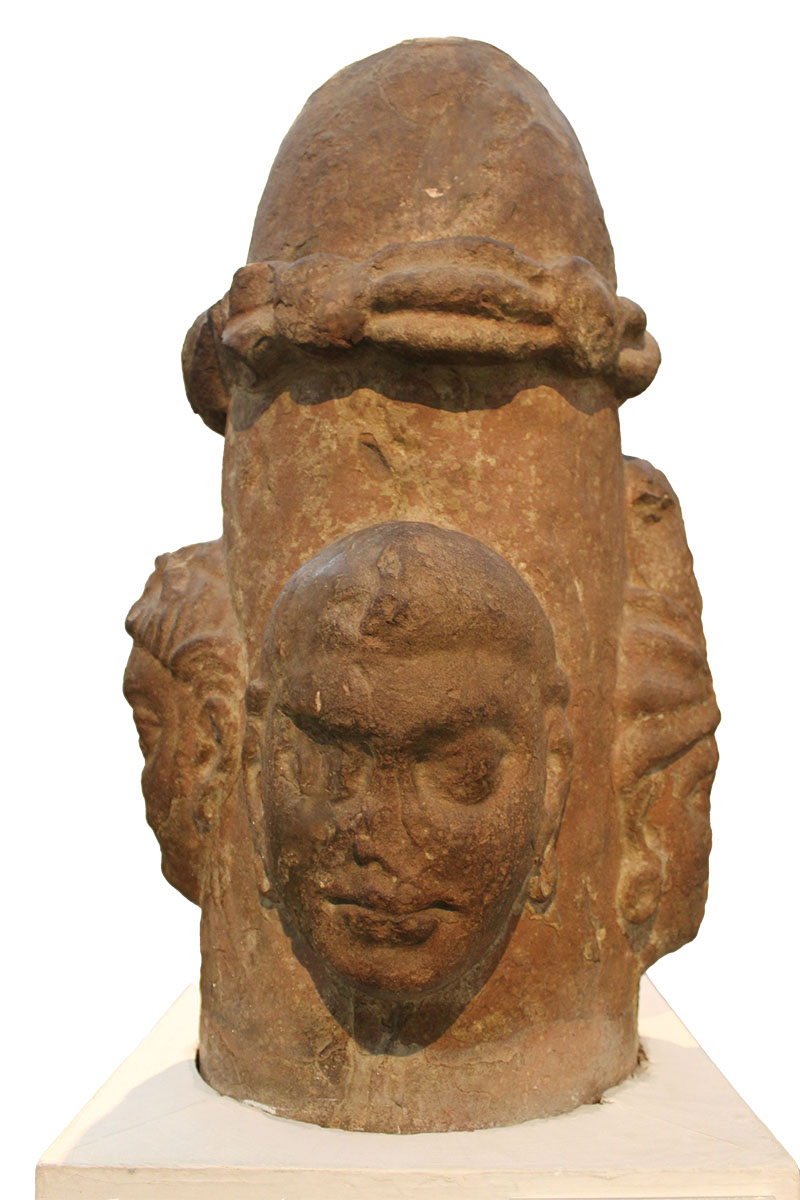A second century Chaturmukha, or four-faced linga, found in Mathura, Uttar Pradesh. Sculpted from mottled and unpolished red sandstone, the linga measures seventy-two centimetres in height, thirty-six centimetres. The features of the linga are characteristic of the Mathura school of art. The top of the sculpture is rounded to resemble a human phallus with a distinct partition in the stone to mark the head of the phallus and represent the organ accurately; additionally, four faces are carved on the lower half of the sculpture. Following the standard template of Mathura sculpture under Kushan rule, the faces have generic features, moustaches, matted hair and elongated earlobes with earrings.
The Chaturmukha linga is a type of mukhalinga (Sanskrit, meaning “linga with a face”), as it was carved to show human faces rather than a simplified phallic form. The faces represent the five aspects of Shiva, the Hindu deity associated with linga worship: Vamadeva, Tatpurusha, Aghora, Sadyojata and Isana. The number of faces carved into the linga likely corresponded with the number of doorways in the shrine where the linga was situated.
According to art historian Stella Kramrisch, the combination of the vertically-pointed linga (urdhvalinga) and the human face create a Tantric symbol of human creativity: the upward-moving “seed” (or inspiration) climbs up the spine and is retained in the brain. The mukhalinga thus signifies the ascendance and transmutation of sexual energies into creative power.
Today, the Chaturmukha linga is part of the Kushan Collection in the National Museum, New Delhi.







